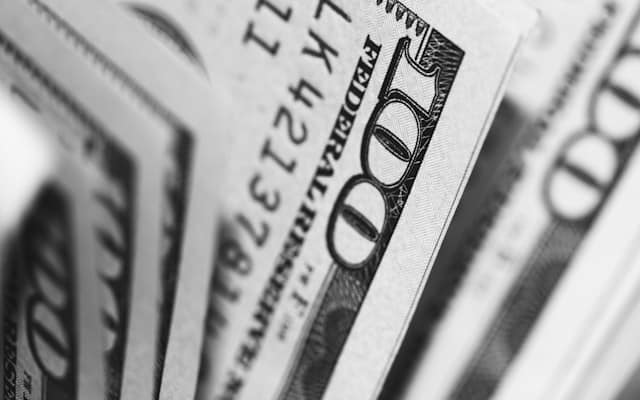Creating an emergency fund: Why and how

In the world of personal finance, there are few concepts as universally recommended as the creation of an emergency fund. No matter who you are, or what your financial situation might be, experts agree that having a rainy day fund is an essential part of financial health.
The concept is simple: an emergency fund is a stash of money set aside to cover the financial surprises life throws your way. These unexpected events can be stressful, but having an emergency fund can alleviate some of that anxiety. This is essentially a buffer between you and the financial curveballs of life. But why is it so necessary, and how can you go about creating one? Let’s explore.
Dans le meme genre : The impact of inflation on your investments
The Importance of an Emergency Fund
An emergency fund acts as your financial safety net. It’s your first line of defense against the unexpected. This could be anything, from sudden medical expenses, job loss, car repairs, or unplanned travel expenses. Without one, these unexpected events can lead to financial turmoil or escalate into a financial crisis.
A significant number of people live from paycheck to paycheck. For these individuals, an unexpected expense can force them into debt or cause severe financial distress. An emergency fund can help prevent this, providing a safety net that can keep unforeseen expenses from derailing your financial future.
Lire également : Current trends in real estate interior design
People often confuse their emergency fund with their general savings. While they might seem similar, they serve different purposes. Your savings are for planned purchases or investments, while your emergency fund is purely for unexpected costs. This fund should be easily accessible, but not too easily that you’re tempted to dip into it for non-emergencies.
How Much Should Be in Your Emergency Fund
Financial advisers typically recommend that your emergency fund should cover three to six months’ worth of living expenses. This gives you a buffer in case of job loss or other significant events that could affect your income. However, the exact amount you need can depend on your personal circumstances and lifestyle.
For example, if you have a high-risk job or a volatile income, you might want to aim for a larger emergency fund. Similarly, if you have dependents or significant financial responsibilities, a larger fund might be necessary.
Remember, the goal is not to build up this fund overnight. It’s better to start small and gradually build it up over time. The key is to make regular contributions to it as part of your budget.
Where to Keep Your Emergency Fund
An emergency fund needs to be easily accessible. However, if it’s too easily accessible, you might be tempted to use it for non-emergencies. So, you need a balance between accessibility and prevention against unnecessary usage.
High-yield savings accounts are a popular choice for emergency funds. These accounts offer higher interest rates than regular savings accounts, helping your money grow while it’s sitting there. Another option is a money market account, which often has higher interest rates than a regular savings account and can come with check-writing privileges, making it easy to access your funds when you need them.
Ensure that wherever you keep your emergency fund, it is insured. Federal Deposit Insurance Corporation (FDIC) insured accounts will protect your money up to $250,000, which provides an additional level of security for your fund.
Tips for Building an Emergency Fund
Building an emergency fund may seem daunting, especially if you’re starting from zero. However, with a bit of planning and discipline, it’s definitely achievable.
First, it’s crucial to include your emergency fund as a line item in your budget. Treat it like any other essential expense. Even if you can only afford to put away a small amount each month, it’s better than nothing.
Next, consider automating your savings. Direct a portion of your paycheck to your emergency fund automatically. This makes saving effortless and ensures you don’t forget or skip this critical step.
Finally, consider increasing your contributions whenever you get a raise, bonus, or come across extra money. This can help you build your fund faster without impacting your day-to-day finances.
The Role of an Emergency Fund in Your Overall Financial Plan
An emergency fund is not a standalone solution to financial health; instead, it’s a part of a comprehensive financial plan. It works in conjunction with proper budgeting, debt management, retirement planning, and wise investments.
While an emergency fund can provide a measure of financial security, it’s not meant to cover large-scale financial goals like buying a house or funding retirement. For these goals, you need separate savings and investment strategies.
In conclusion, an emergency fund is a vital tool for managing financial risks and protecting yourself from unexpected expenses. It provides peace of mind and financial security, allowing you to handle life’s surprises without derailing your financial health. It’s a crucial step to achieving long-term financial success.
Using Strategies to Create an Emergency Fund
Creating an emergency fund may seem like a daunting task, especially when you’re living on a tight budget. However, with a strategic approach and consistency, it’s entirely possible to build a substantial emergency fund. Here are a few strategies to consider:
1. Set a monthly savings goal: This could be a fixed amount or a percentage of your income. Even a small amount, when saved consistently, can add up over time.
2. Automate your savings: Most banks offer automatic transfers between your checking and savings accounts. You can set up your account to automatically transfer a certain amount to your emergency fund monthly.
3. Save your windfalls: If you receive a tax refund, a bonus at work, or any unexpected money, consider putting a portion, if not all, into your emergency fund.
4. Cut back on non-essential expenses: Review your spending habits and identify areas where you can cut back. This might include dining out less often, cancelling unused subscriptions, or downgrading your cable package.
5. Increase your income: Consider taking a part-time job, selling items you no longer need, or monetizing a hobby to earn extra money.
Remember, the goal is to build your fund gradually. Don’t be discouraged if progress seems slow in the beginning. The key is to stay focused and committed to your goal.
Conclusion: The Peace of Mind an Emergency Fund Brings
In conclusion, an emergency fund serves as a financial safety net, cushioning you against unforeseen expenses. It’s a buffer between you and potential financial calamity, ensuring that a crisis doesn’t turn into a disaster.
While it might seem difficult to start, remember that it’s not about the amount you begin with, but the consistency in adding to it. Whether it’s $5 or $500, what matters is establishing the habit of saving. As you continue to contribute, you’ll see your fund grow, providing you with increased financial security.
Beyond the financial benefits, an emergency fund offers emotional benefits as well. It provides a sense of security and peace of mind, knowing you’re prepared to handle life’s unexpected turns. It empowers you to make confident financial decisions without the stress of living on the edge.
So, start today. Prioritize building an emergency fund as part of your financial plan. Use strategies that work best for you, and remember, every little bit counts. Over time, you’ll build a robust emergency fund that will serve as your financial safety net, providing you with peace of mind and financial stability. In the unpredictable journey of life, having an emergency fund is one sure way to navigate the financial surprises along the way. So, embrace the process and enjoy the financial confidence and tranquility that an emergency fund brings.
